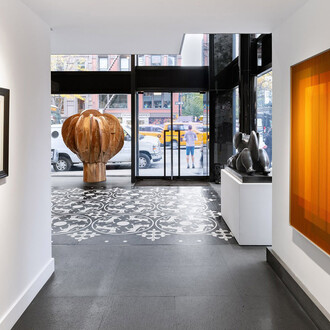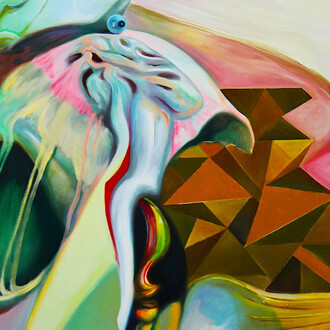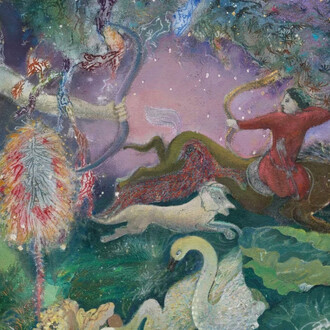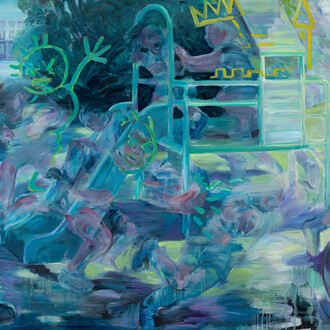Opera Gallery in New York is pleased to present Lines in motion, a group exhibition that explores the broad and expressive potential of the line across the mediums of painting, drawing and sculpture. Created between 1948-2025, the exhibition features artworks by Pierre Soulages, Sol Lewitt, Hans Hartung, Georges Mathieu, André Lanskoy, Serge Poliakoff, Pablo Atchugarry, Richard Prince, Victor Vasarely, Carlos Cruz-Diez, John Helton, Pieter Obels and Fred Eerdekens.
Lines in motion is broadly split into the four distinct categories of Lyrical Abstraction with the line serving as a gesture of liberation guided by emotions, Op Art’s precise, grid-like use of the line informed by kinetic art, technology and computing, Art and Text’s use of the line in letters and words used to convey meaning, and Sculpture, where the line is used three-dimensionally to convey both movement and weightlessness. Ultimately, the exhibition explores the elements of chance, meaning and possibility that develop out of a single linear gesture.
P1948-16,1948, by French artist Hans Hartung typifies lyrical abstraction with its multicoloured, gestural strokes of pastel on paper–using the line as a conduit for spontaneous and emotive mark-marking. Conversely, Russian artist André Lanskoy uses fluid strokes to convey motion and tumult in La Bataille d’Uccello, c. 1968, an abstracted reinterpretation of Paolo Uccello’s Renaissance battle scenes. In addition to Hartung and Lanskoy, Georges Mathieu, Serge Poliakoff and Pierre Soulages used the line in their work to redefine the act of painting that was liberated from the constraints of figuration.
Widely acknowledged as the leader of the Op Art movement that emerged in the 1960’s, Hungarian artist Victor Vasarely’s paintings used convergent lines and geometric shapes in works like Anadyr-R, 1956-73, to convey a sense of illusion and spacial depth. Similarly in Cromointerferencia espacial 13, 2015, the Venezuelan artist Carlos Cruz-Diez used lines of contrasting colors in his static works to portray movement. Though rooted in geometric abstraction, the work of both artists reference kinetic art through their strategic use of lines and grids.
Through the merging of Art and Text, artist’s used the line as a tool for engagement with semantics through the use of letters and words–examining the ways visual images relate to language. Within this tradition, American artist Richard Prince’s painting Untitled, 2008, juxtaposes words to confront and satirize elements of contemporary American culture. Belgian artist Fred Eerdekens engages with words and meaning through his shadow sculptures which are constructed using delicately twisted copper and aluminum strips. When illuminated, these abstract forms project poetic words and phrases on the walls.
The line is further deconstructed in the sculptures of Pablo Atchugarry, John Helton, and Pieter Obels. In Untitled, 2023, Atchugarry uses lines engraved in white Carrara marble to subtly and elegance of drapery. Conversely, John Helton and Pieter Obels use bronze and corten steel, respectively, to convey motion and weightlessness.
Lines in motion explores the artist’s engagement with the line as an omnipresent and limitless tool for exploring spatial and emotional depth.
















